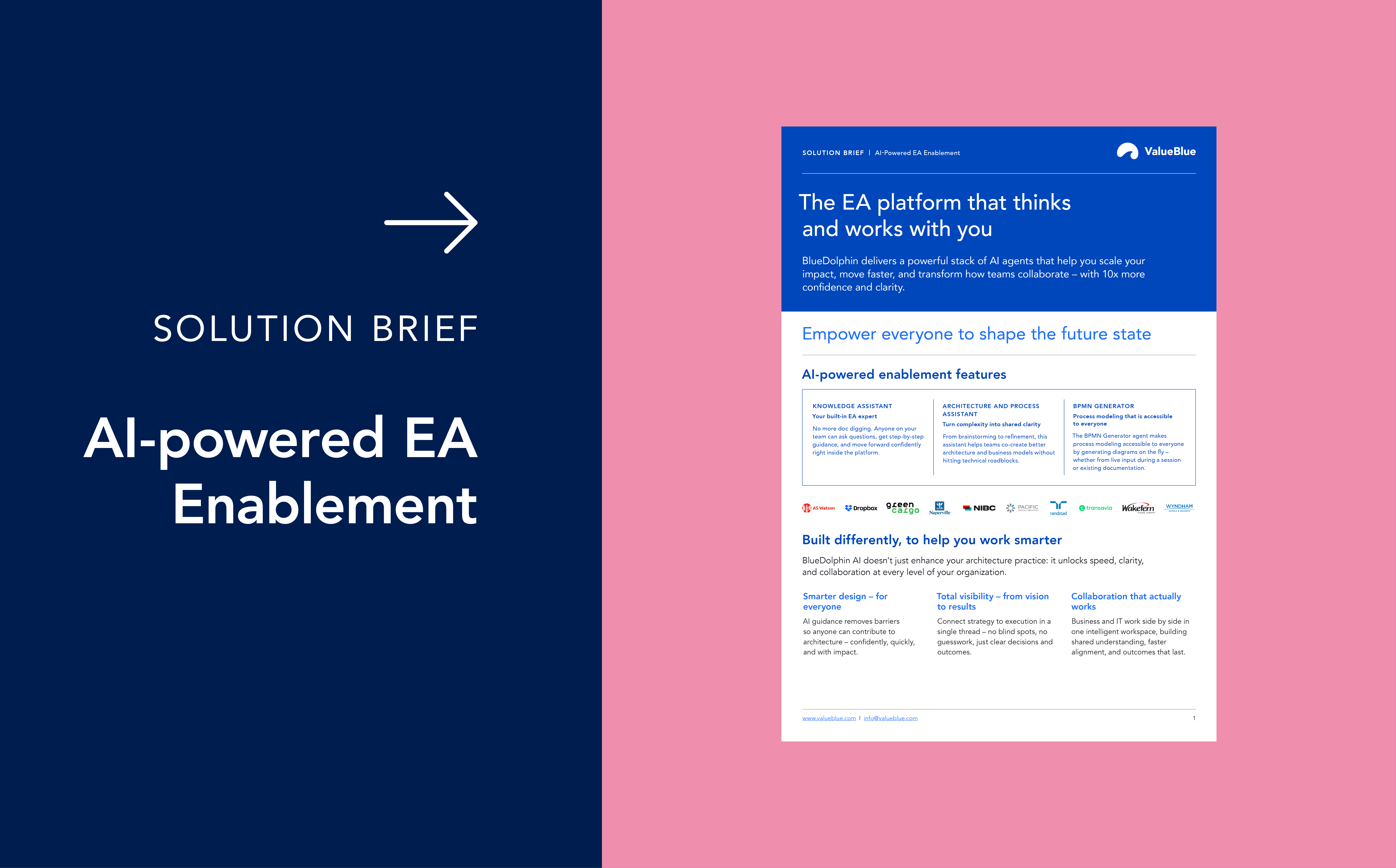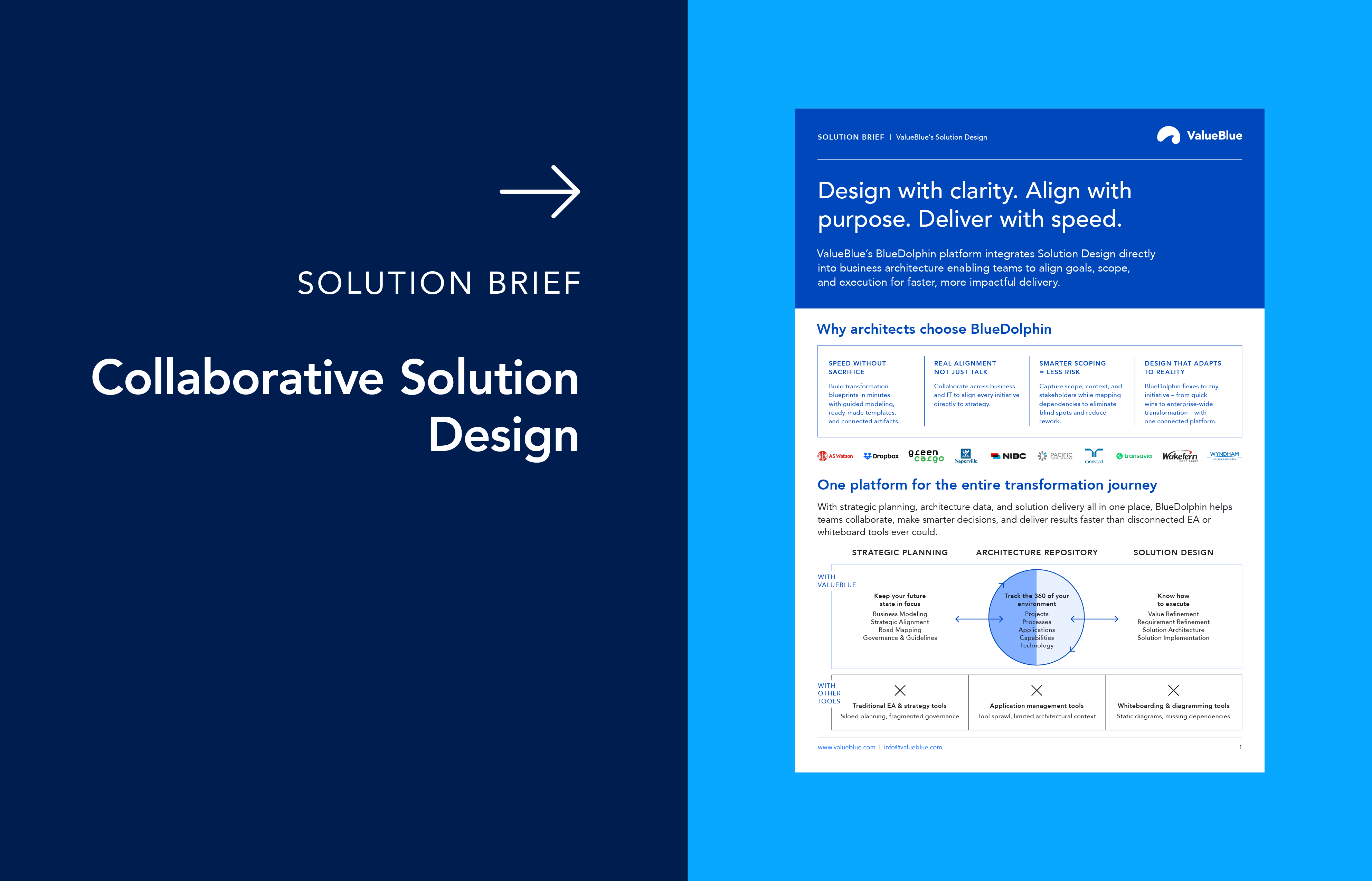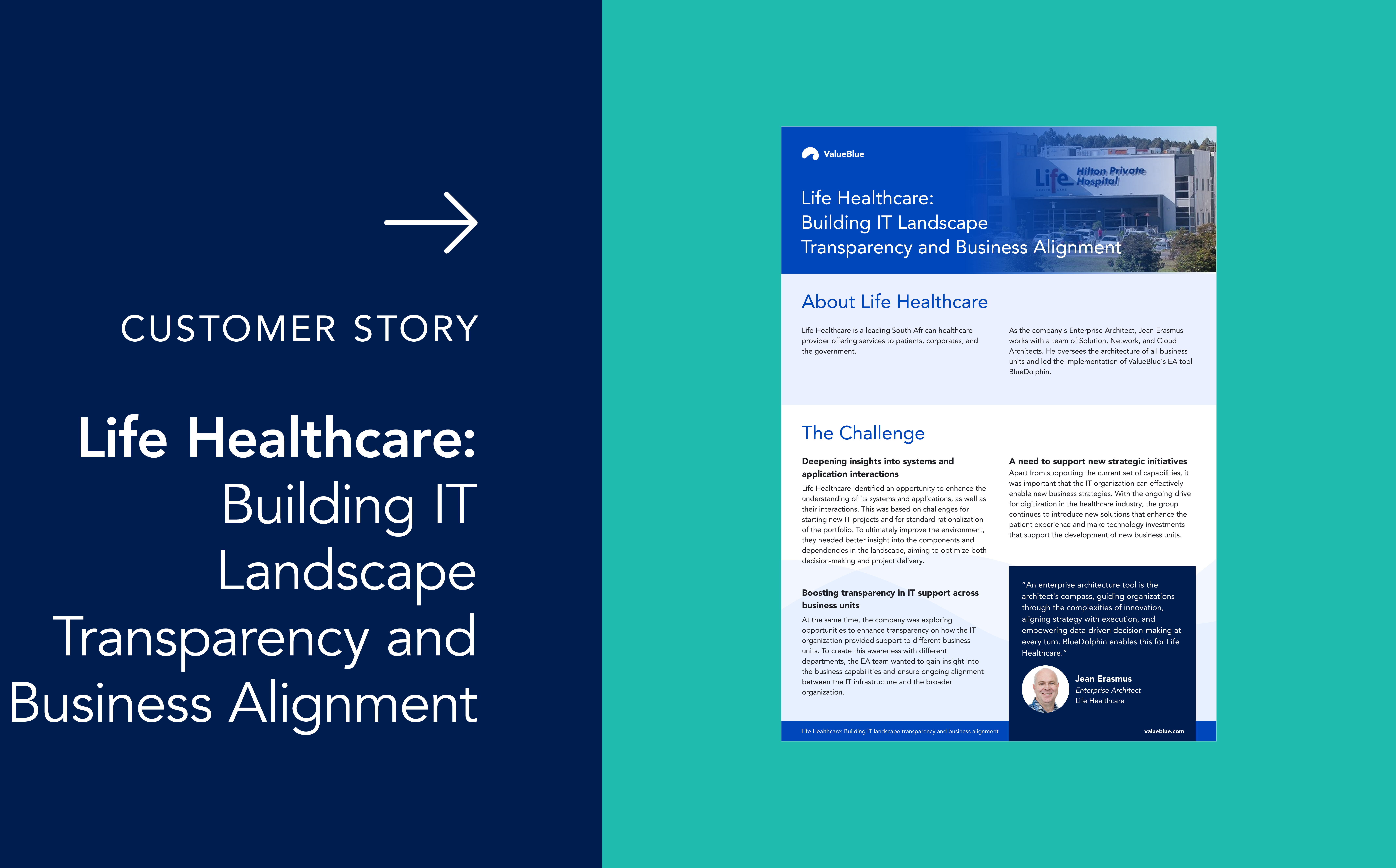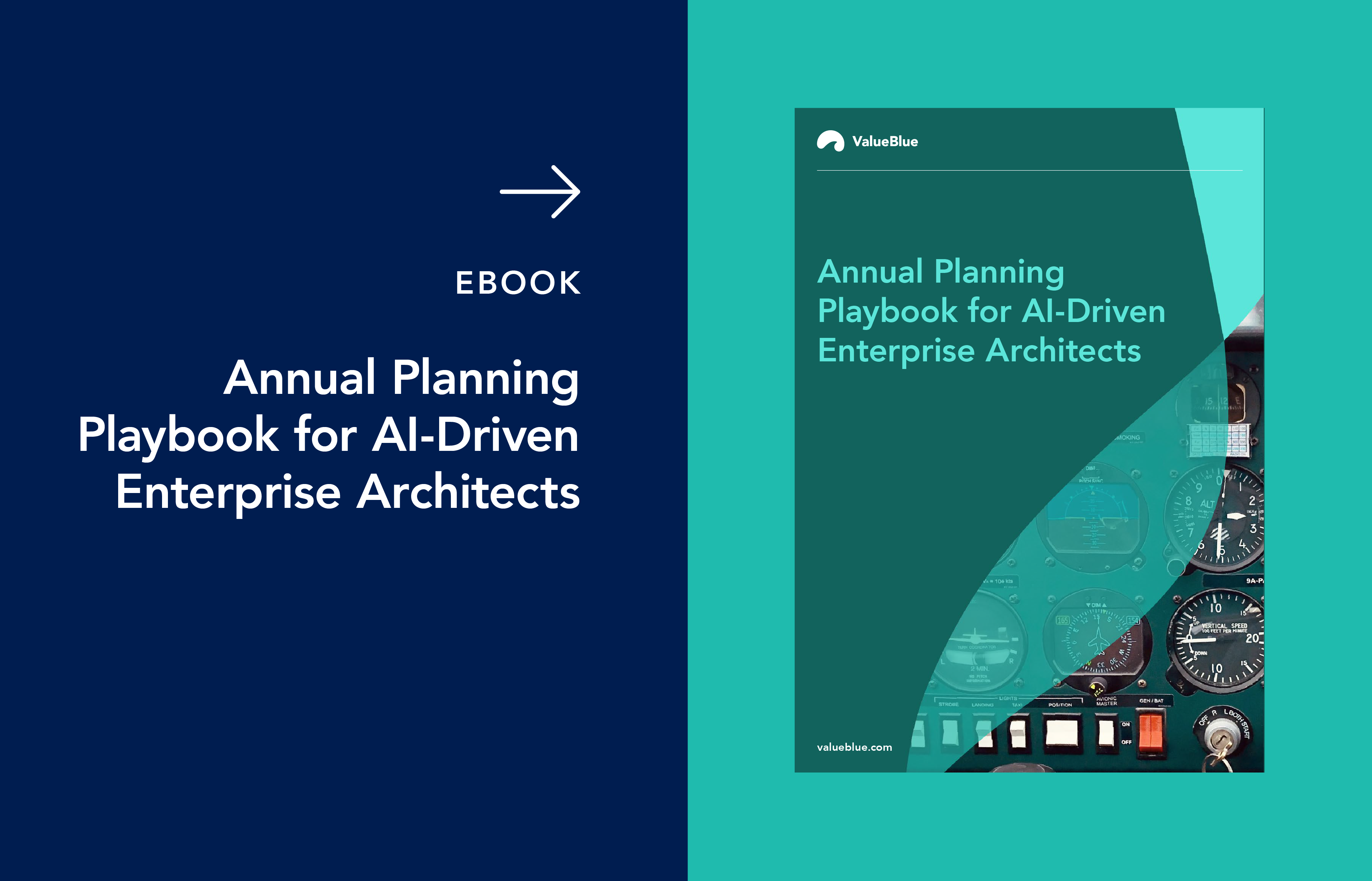Bouwmaat

Who is Bouwmaat?
Organizations have to deal with increasing complexity in information supply. This results, in poor flexibility and decisiveness. Bouwmaat, a national chain of building materials wholesalers for construction professionals, realized in 2018 that it was being hampered by complexity. Insufficient insight and an IT overview were missing, making it increasingly difficult to change effectively. To provide insight into complexity, Bouwmaat decided to implement Enterprise Architecture using BlueDolphin.
A year later, the organization talks about its first successes. What did Bouwmaat do, what challenges did the organization face, and what lies ahead? We spoke with Peter Buenk, Consultant & Solution & Enterprise Architect Bouwmaat / ArchiFlow.
What were the challenges within Bouwmaat?
“The challenge arose within IT. There was no insight and overview into the automation system and changes were becoming more and more difficult to implement. All the while, the need for change is constantly increasing and Bouwmaat is becoming increasingly dependent on automation. Old approaches are no longer adequate. Knowledge was mainly in the minds of different employees, spread across various departments, and was therefore not centrally available and difficult to connect.”
What choices do you make then, in order to provide insight with the aim of meeting the needs to change within Bouwmaat?
“It has become very clear to me that it requires a new way of working. See it as a culture change. Embracing architecture, from decision-making to day-to-day IT management practice, is a major challenge. It’s a process that you should not want to implement quickly because it takes time to get used to change. The trick is to find the optimum between the support and the degree of change that can be absorbed. So step by step. That’s why BlueDolphin was implemented within Bouwmaat in 2018. I was familiar with the tool and knew the possibilities it offered in terms of integrated insight and the recording of the “how” and “why” of automation.”
How do you ensure support to make that cultural change a success?
“Change is difficult, within every organization. The trick is to repeat messages. In addition, thanks to the current management of Bouwmaat, there is a focus on a new way of working. In fact, the importance of architecture is now being emphasized. This creates a consensus about working under architecture and the use of BlueDolphin to make that possible. The organization puts its shoulders to the wheel and that is seen by the management. I force myself to conform to current plans and the basis of architectural management. Having the basis of the implementation in order is an important learning for me on the process of new working methods and BlueDolphin so far.”
"The power of collaboration and shared information in BlueDolphin contributes to the realization of Bouwmaat’s strategy.”
Peter Buenk, Consultant & Solution & Enterprise Architect Bouwmaat / ArchiFlow.
Why BlueDolphin by ValueBlue?
Why did you choose to implement BlueDolphin as Architecture software?
“BlueDolphin gives shape to what’s needed to work under Architecture. It forces an organization to think about how they work together and BlueDolphin makes that collaboration possible. BlueDolphin is strong in integrating IT management and at the same time making the link to strategy. Strategy and operation are linked and recorded within one platform.”
“This is needed to become an organization that can cope with continuous change. Of course, BlueDolphin is an application; a tool, but it supports the need for a certain way of working making the tool key when it comes to Bouwmaat’s strategy. The organization has a robust growth strategy. Bouwmaat is currently the market leader in the HRO market (Recovery, Maintenance, and Renovation market) and wants to maximize and expand that position. BlueDolphin ensures that employees are actively encouraged to work together within one central system. The power of collaboration and shared information in BlueDolphin contributes to the realization of Bouwmaat’s strategy.”
Can you give an example of the collaboration that arose?
“As an example, we can use the Bouwmaat Development Clusters created through the implementation of BlueDolphin. Each Cluster has an application manager and information manager working on it. They work together with the product owner of an application on the change and improvement of the application and the processes that are supported by it.”
What is needed to get the use of an Architecture tool off the ground throughout the organization?
“Make it easy for people to contribute to change themselves instead of just talking about changes and the obligations associated with it. Explain the power of collaboration and discuss the possibilities created by centralizing information and making knowledge transparent. Show how people can add knowledge themselves. Then keep naming it and show results. BlueDolphin visualizes that very easily.”
Do you think that every organization is able to work under Architecture?
“Yes! Architecture is not dependent on the number of IT-dependent jobs. Obviously, an Architect must have an overview in the first phase, but in the long run, he or she is not the one to give the input. Look at Bouwmaat. A relatively small organization that can manage it without having many architects. Bouwmaat makes architecture a business capability. It is inserted pragmatically and is not an end in itself. Last week I read about practical application and how it must always beat the theory. That pragmatic approach is already embedded in Bouwmaat’s culture.”
Which steps has Bouwmaat taken toward maturity in the field of architecture?
“In the first place, a whole lot of knowledge has now become accessible. Processes are recorded company-wide. The process house in BlueDolphin is the framework with which the collaboration between business and IT is supported. Through the development clusters, employees can see which applications are related to a specific topic and who the managers involved are. The clusters have become a household name within the organization and they ensure that knowledge and resources are bundled. Every cluster has an application manager and information manager, and the applications within a cluster all have a product owner from the business. In this way the business is involved in changes and the further development of applications and the challenge of continuous change is met.”
And what did it deliver?
“Our profit lies mainly in a more integrated view and approach to IT (change) and good knowledge exchange and recording. This provides insights we had not previously encountered, so now we are better prepared and problems can be prevented. Another advantage is that model-based, standardized knowledge recording is becoming more and more normal. Where previously diagrams and viewpoints were valued less, they are increasingly commonplace or even expected. For me, that is a profit and a sign of increased professionalization and maturity of the Bouwmaat organization.”



